

| Region rejsu : Północna Europa |
| Firma : Oceania Cruises |
| Statek : Insignia |
| Data rozpoczęcia : pt. 24 lip 2026 |
| Data zakończenia : pon. 03 sie 2026 |
| Liczba nocy : 10 nocy |
| Dzień | Data | Port | Wypłynięcie | Odpłynięcie |
|---|---|---|---|---|
| 1 | 24.07 pt. | Reykjavik / Islandia | 07:00 | 21:00 |
| 2 | 25.07 sob. | Heimaey Vestmannaeyjar Islandia | 08:00 | 17:00 |
| 3 | 26.07 niedz. | Dzień na morzu / Morze | ||
| 4 | 27.07 pon. | Torshavn / Faroe Islands | 07:00 | 17:00 |
| 5 | 28.07 wt. | Runavík Рунавик / Faroe Islands | 07:00 | 16:00 |
| 6 | 29.07 śr. | Djupivogur / Islandia | 10:00 | 20:00 |
| 7 | 30.07 czw. | Eskifjordur / Islandia | 07:00 | 16:00 |
| 8 | 31.07 pt. | Akureyri / Islandia | 10:00 | 19:00 |
| 9 | 1.08 sob. | Isafjordur / Islandia | 09:00 | 19:00 |
| 10 | 2.08 niedz. | Grundarfjordur / Islandia | 08:00 | 18:00 |
| 11 | 3.08 pon. | Reykjavik / Islandia | 07:00 |
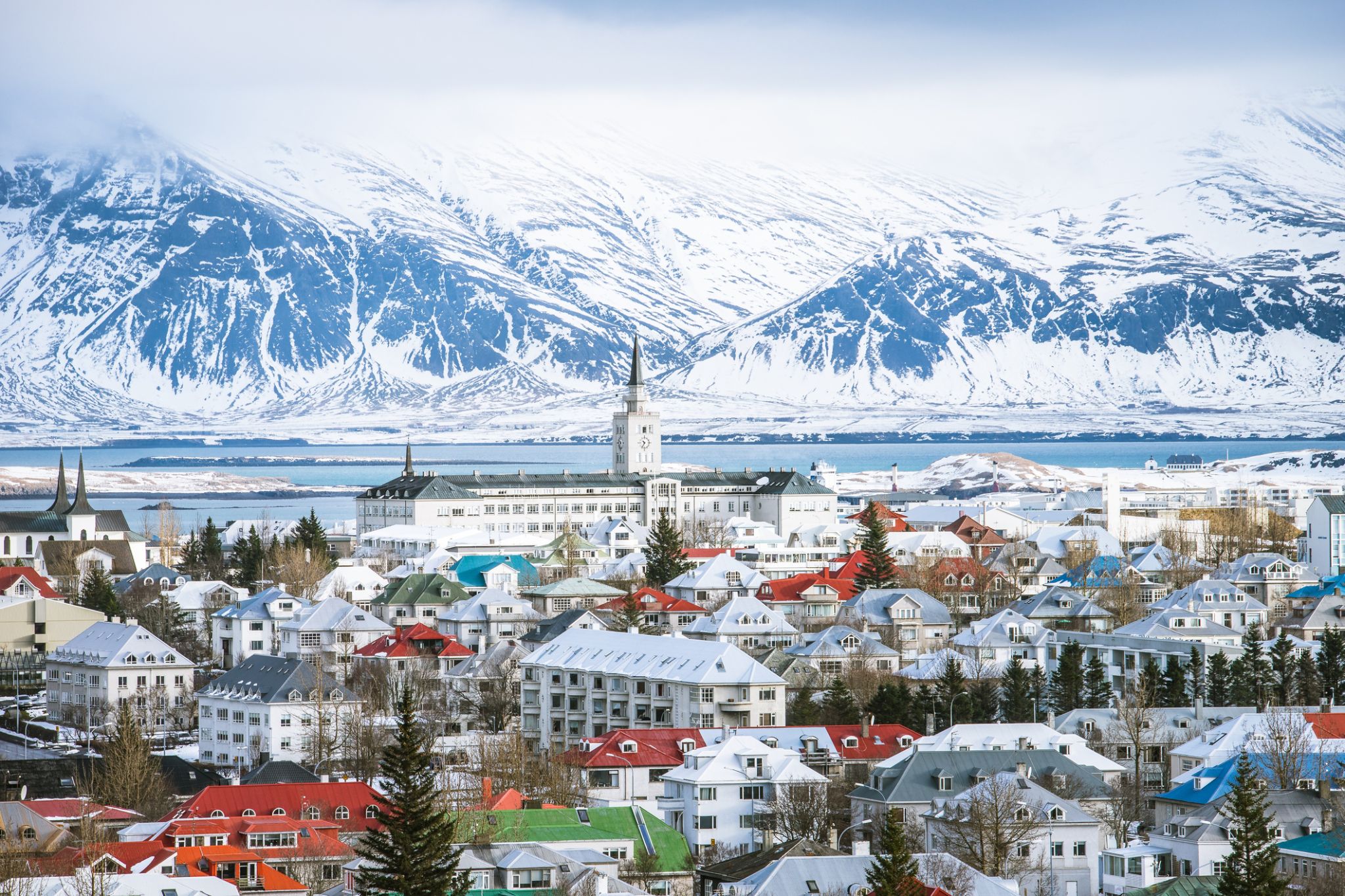
Reykjavík is the capital and largest city of Iceland. It is located in southwestern Iceland, on the southern shore of Faxa Bay. Its latitude is 64°08' N, making it the world's northernmost capital of a sovereign state. With a population of around 123,300 (and over 216,940 in the Capital Region), it is the heart of Iceland's cultural, economic and governmental activity, and is a popular tourist destination.
Reykjavík is believed to be the location of the first permanent settlement in Iceland, which, according to Ingólfr Arnarson, was established in AD 874. Until the 19th century, there was no urban development in the city location. The city was founded in 1786 as an official trading town and grew steadily over the following decades, as it transformed into a regional and later national centre of commerce, population, and governmental activities. It is among the cleanest, greenest, and safest cities in the world.
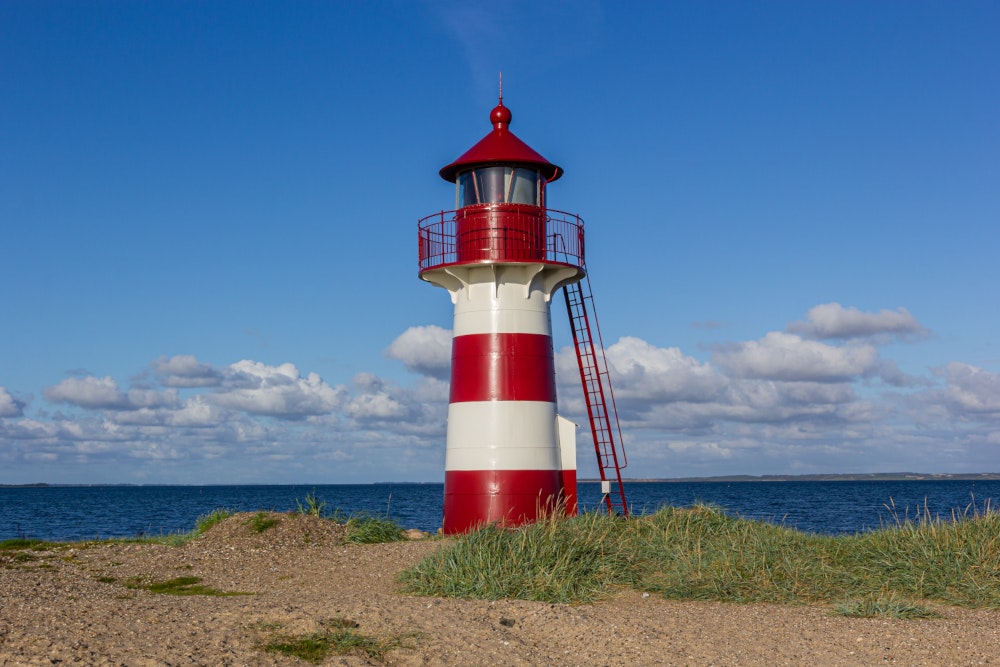

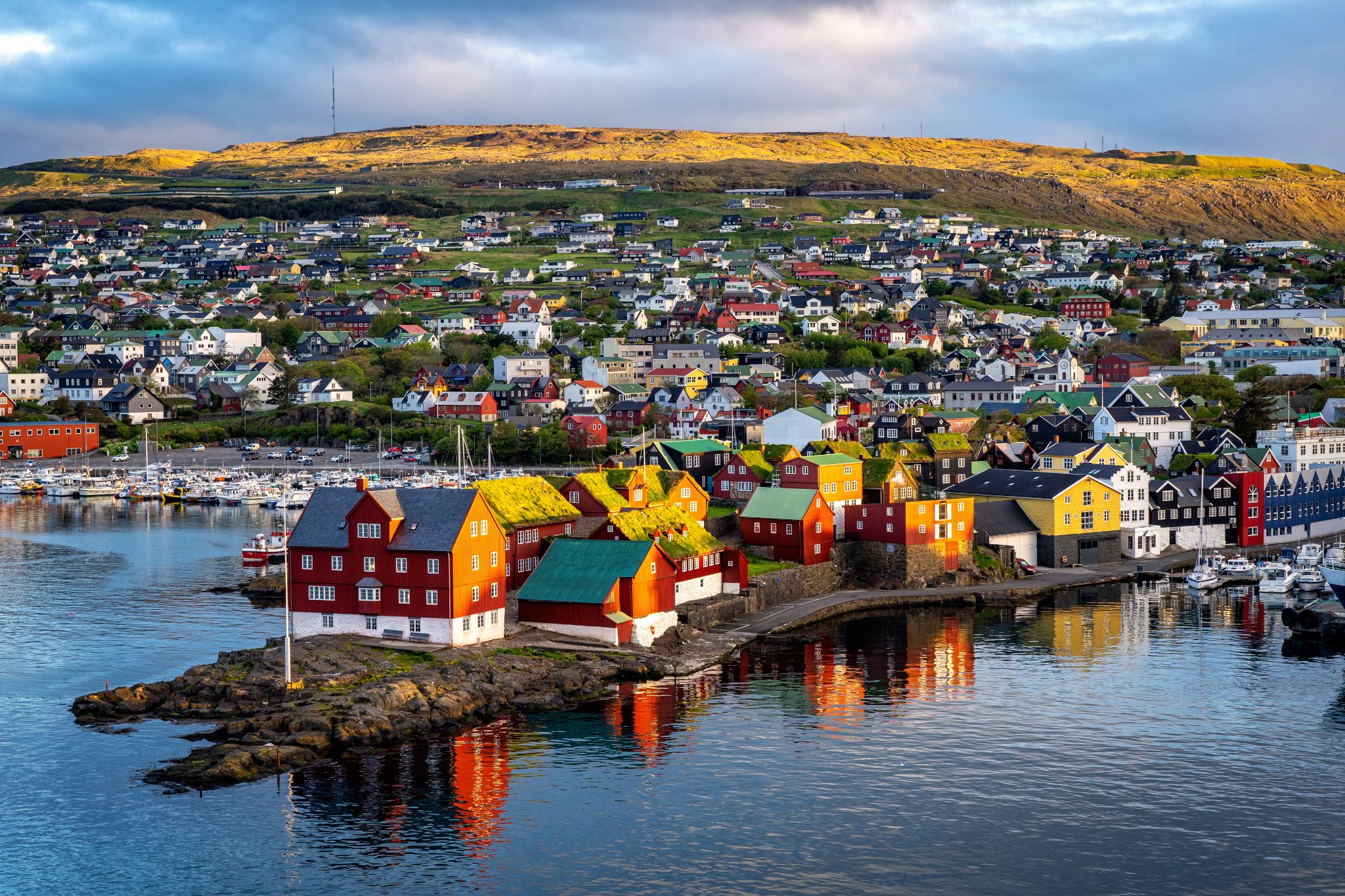
Tórshavn is the capital and largest town of the Faroe Islands. Tórshavn is in the southern part on the east coast of Streymoy. To the northwest of the city lies the 347-meter-high (1,138 ft) mountain Húsareyn, and to the southwest, the 350-meter-high (1,150 ft) Kirkjubøreyn. They are separated by the Sandá River. The town proper has a population of 13,089 (2017), and the greater urban area a population of 21,000.
The Norse established their parliament on the Tinganes peninsula in AD 850.[3] Tórshavn thus became the capital of the Faroe Islands and has remained so ever since. All through the Middle Ages the narrow peninsula jutting out into the sea made up the main part of Tórshavn. Early on, Tórshavn became the centre of the islands' trade monopoly, thereby being the only legal place for the islanders to sell and buy goods. In 1856, the trade monopoly was abolished and the islands were left open to free trade.

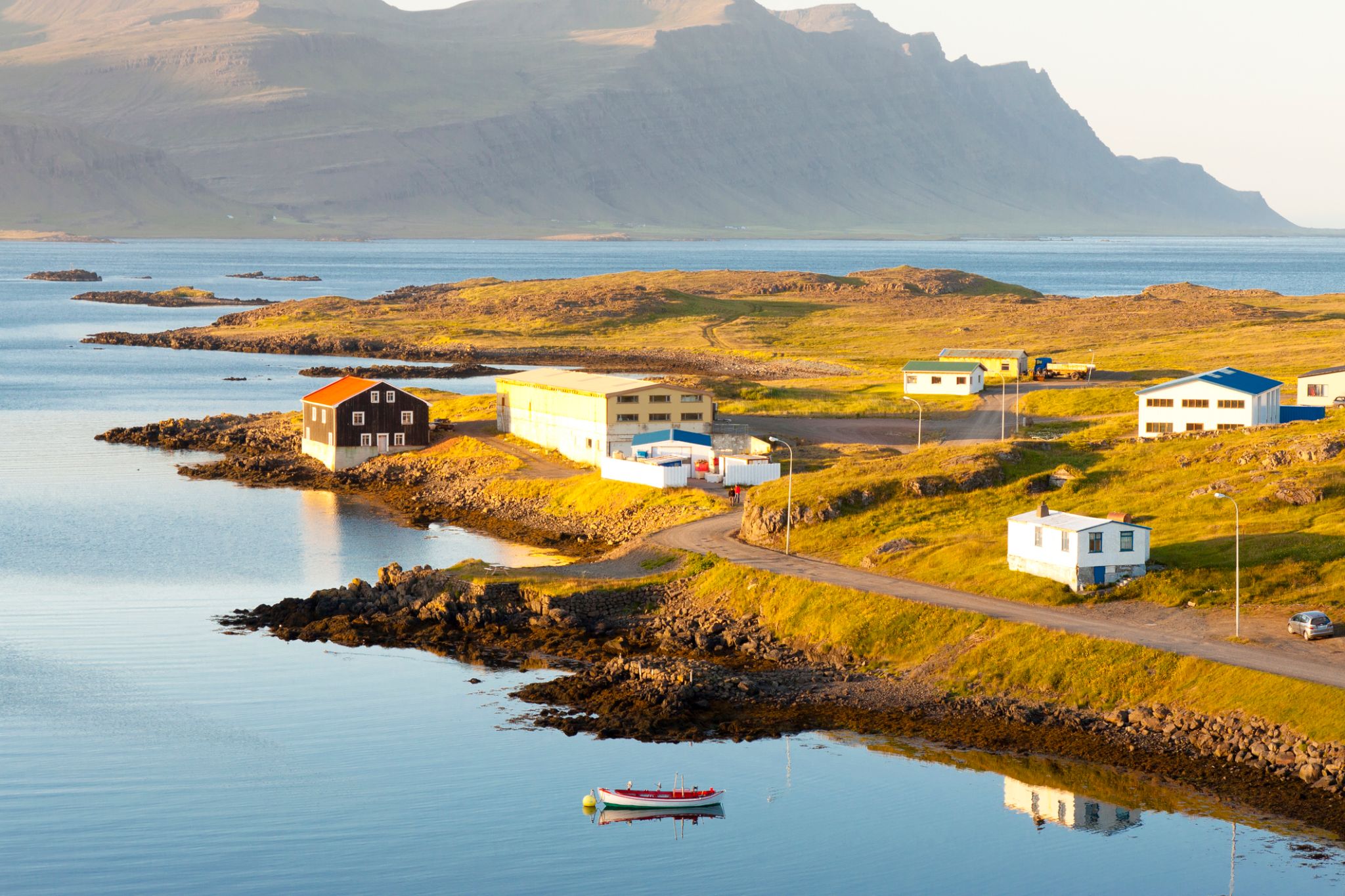

Eskifjordur to mały, ale malowniczy fiord położony we wschodniej Islandii, który przyciąga turystów swoją naturalną urodą i spokojną atmosferą. Otoczony wysokimi górami, Eskifjordur to idealne miejsce dla tych, którzy szukają ciszy i spokoju z dala od zatłoczonych szlaków turystycznych. Odwiedzający mogą cieszyć się świeżym powietrzem i zapierającymi dech w piersiach widokami na fiord, który łączy się z Oceanem Atlantyckim. Tradycyjne islandzkie domy z dachami pokrytymi torfem dodają temu spokojnemu miastu uroku.
Miasto słynie również ze swojego dziedzictwa kulturowego i historii. W pobliskich wioskach można zapoznać się z tradycyjnym stylem życia miejscowych mieszkańców, a kilka interesujących muzeów, w tym muzeum rybołówstwa, opowiada historię przemysłu rybnego w regionie. Eskifjordur jest również doskonałą bazą do zwiedzania wschodniej Islandii, oferując możliwość pieszych wędrówek, wędkowania i obserwacji dzikiej przyrody, w tym lokalnych ptaków i ssaków morskich.

Akureyri is a town in northern Iceland. It is Iceland's Fifth largest municipality.
Nicknamed the Capital of North Iceland, Akureyri is an important port and fishing centre. The area where Akureyri is located was settled in the 9th century but did not receive a municipal charter until 1786. The town was the site of Alliedunits during World War II. Further growth occurred after the war as the Icelandic population increasingly moved to urban areas.
The area has a relatively mild climate because of geographical factors, and the town's ice-free harbour has played a significant role in its history.
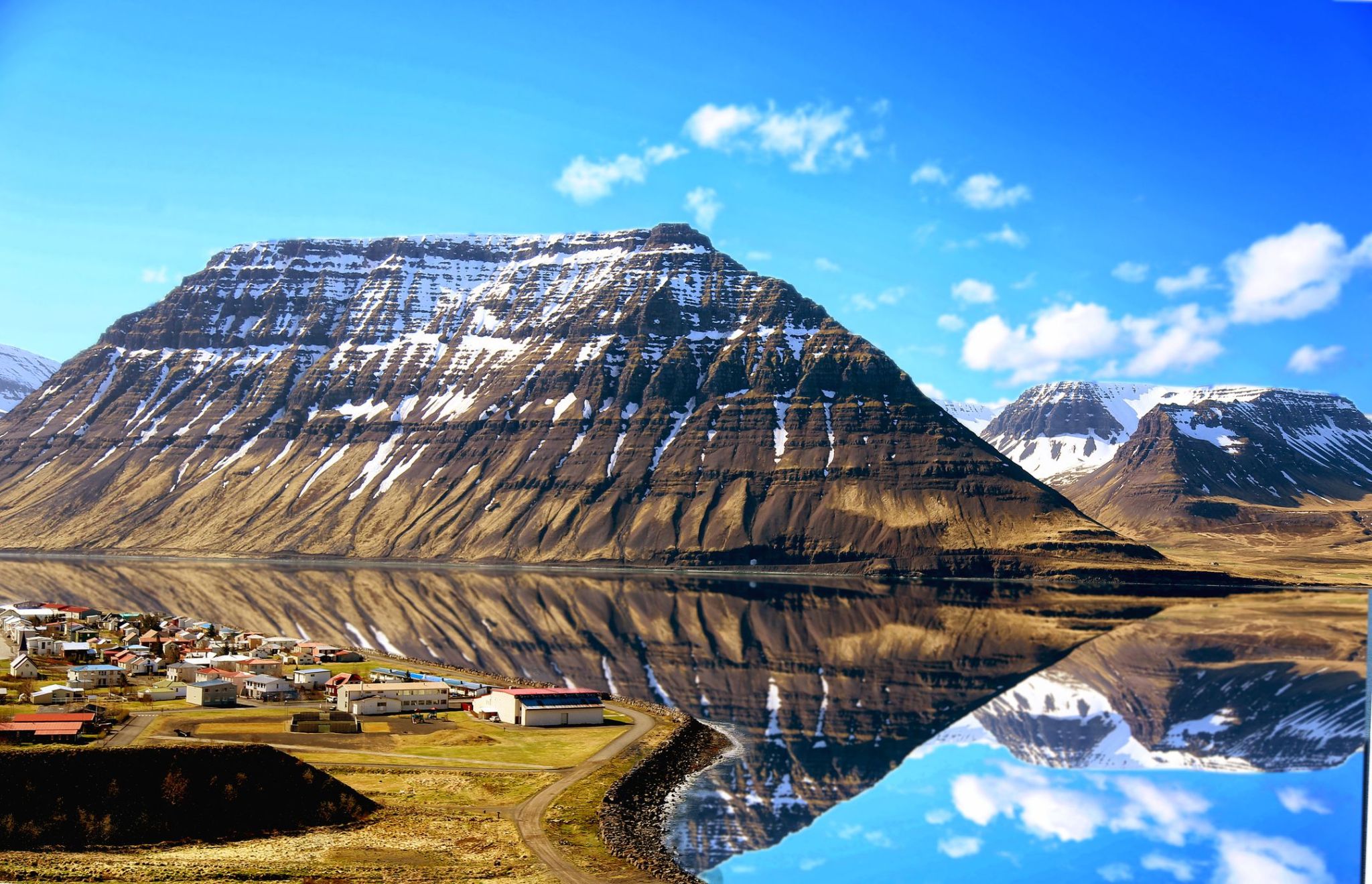
Isafjörður, meaning ice fjord or fjord of ice, ice in plural genitive) is a town in the northwest of Iceland.
The oldest part of Ísafjörður with the town centre is located on a spit of sand, or eyri, in Skutulsfjörður, a fjord which meets the waters of the larger fjord Ísafjarðardjúp. With a population of about 2,600, Ísafjörður is the largest settlement in the peninsula of Vestfirðir (Westfjords) and the administration centre of the Ísafjarðarbær municipality, which includes – besides Ísafjörður – the nearby villages of Hnífsdalur, Flateyri, Suðureyri, and Þingeyri.
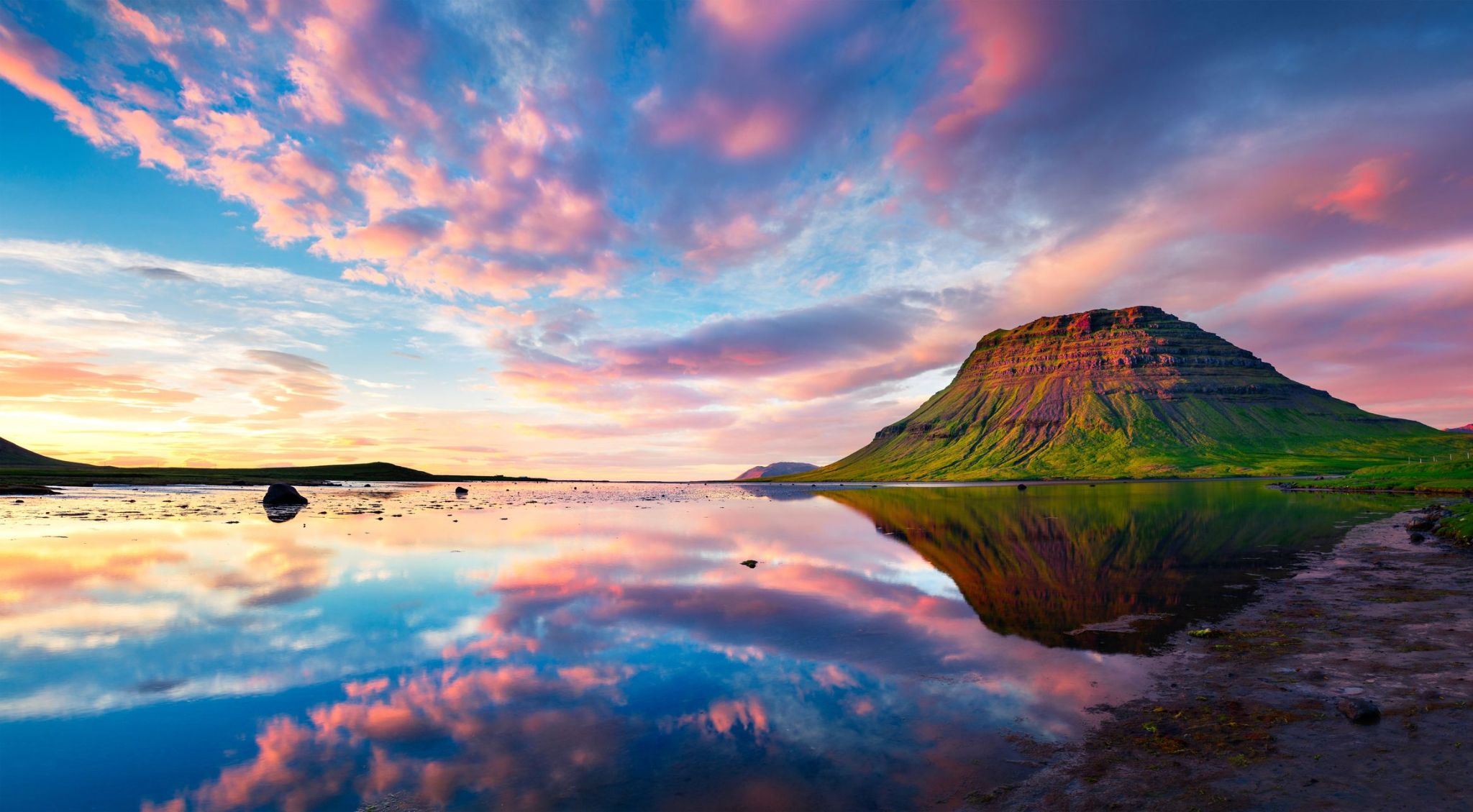
Grundarfjordur to malownicze miasto położone na zachodnim wybrzeżu Islandii, u stóp majestatycznej góry Kirkjufell. To niewielkie osiedle przyciąga turystów zapierającymi dech w piersiach widokami na fiordy i górskie krajobrazy, a także unikalną przyrodą, w tym licznymi wodospadami i geotermalnymi źródłami. Jedną z głównych atrakcji w regionie jest góra Kirkjufell, która stała się słynna dzięki swojemu charakterystycznemu sylwetce i popularności wśród fotografów. Grundarfjordur jest doskonałym punktem wyjścia do odkrywania pobliskich miejsc przyrodniczych, takich jak Park Narodowy Skaftafell i lodowiec Skaftatall.
Dla miłośników aktywnego wypoczynku Grundarfjordur oferuje wspaniałe możliwości wędkarstwa, pieszych wędrówek i obserwacji ptaków. W mieście znajdują się także przytulne kawiarnie i restauracje serwujące świeże owoce morza oraz tradycyjne islandzkie dania. Dodatkowo Grundarfjordur znajduje się blisko głównych tras turystycznych Islandii, co czyni go dogodnym miejscem na postój w drodze do słynnych cudów natury kraju.

Reykjavík is the capital and largest city of Iceland. It is located in southwestern Iceland, on the southern shore of Faxa Bay. Its latitude is 64°08' N, making it the world's northernmost capital of a sovereign state. With a population of around 123,300 (and over 216,940 in the Capital Region), it is the heart of Iceland's cultural, economic and governmental activity, and is a popular tourist destination.
Reykjavík is believed to be the location of the first permanent settlement in Iceland, which, according to Ingólfr Arnarson, was established in AD 874. Until the 19th century, there was no urban development in the city location. The city was founded in 1786 as an official trading town and grew steadily over the following decades, as it transformed into a regional and later national centre of commerce, population, and governmental activities. It is among the cleanest, greenest, and safest cities in the world.